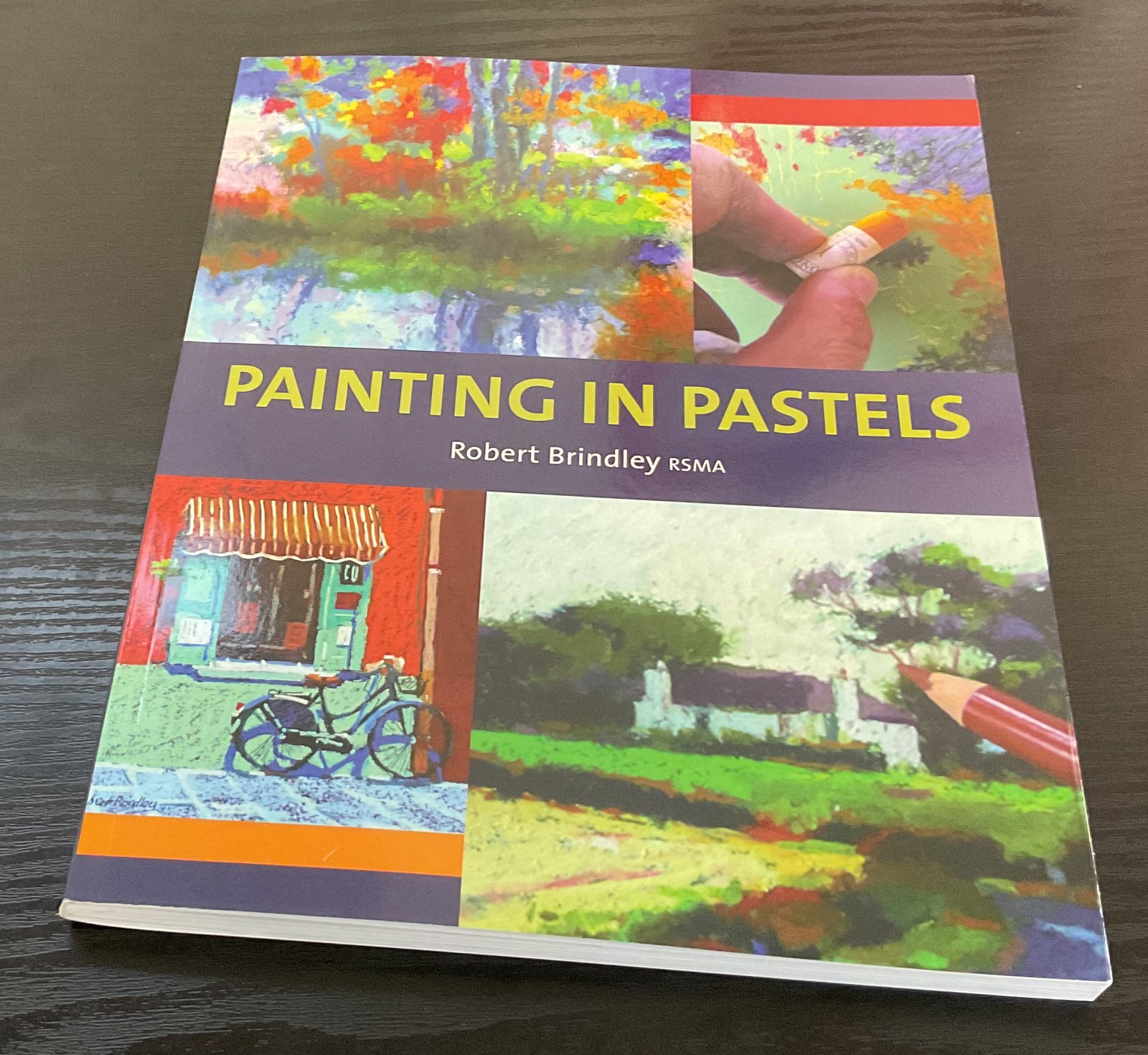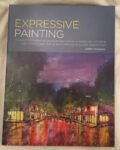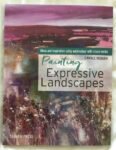My birthday's coming up and I have loads of new art instruction books to look…

Painting In Pastels, Robert Brindley – Book Review
Time for another book review. Still considering myself a novice with soft pastels, I’ve had my eye on this one for a while and when the price dropped briefly, I jumped in with an order. This is a 160 page paperback, nice and glossy looking and is all about using soft pastels, not oil pastels.
Chapter-wise, after some opening rambling, we have about:
- 10 pages on materials
- 25 pages on “getting started”
- 20 pages on “techniques”
- 65 pages on landscapes and outdoor subjects, split over four chapters
- 5 pages on interiors and still life
- 10 pages on people
- 5 pages on final thoughts
And throughout the book we have lots of five or six step demonstrations and lots of critiques of some of Robert’s old paintings. Plenty for me to talk about.
The chapter in materials is thankfully short. Shorter than it sounds because it includes a demo and a critique! It has plenty of suggestions about what pastels and supports to buy and advice on all the other stuff you need. In some of the later demos, there are instructions on how to prepare supports by painting all sorts of stuff onto painting surfaces – something that’s not of interest to me but maybe not others.
I was dreading the chapter in getting started, coming as it does before a chapter in techniques but it turned out to be pretty good. Lots of information on light, colours, tone, perspective, choice of subject. All stuff that I was familiar with already but viewed instead through a soft pastel lens. I especially liked some of the ideas on composition, deliberately playing around with a scene to create subtle ways of leading the eye through a painting. I’m liking this book already.
Then a chapter on techniques. I was expecting this to just be about all the different ways of putting down marks but there’s a lot more here. Stuff about how to set up for a pastel painting session and the first description of the painting process from drawing through first layers to finishing touches. Once again, there’s a lot here. This book’s feeling quite densely packed with useful ideas.
Then we have the four chapters on landscapes and the outdoors. First is a chapter in plein air vs the studio. The pros and cons of both, how to prepare for plein air painting, problems to be aware of when painting in the studio from photos. At one point we take a little diversion for about ten pages to look through some of Robert’s paintings of Venice: this felt like padding in comparison to everything else I’d seen by this point. Then we have a chapter on landscapes, with discussion about the four seasons in the U.K., advice on skies/clouds/greenery/trees and ideas about what to paint out in the city. Then there’s a chapter on coastal scenes (for people who think summers are too green). There’s advice on painting water and reflections but most of this chapter is on ideas about what to look for and to paint. Finally there’s a short chapter on other outdoor subjects that does nothing more than suggest heading to the zoo or to the races to paint animals. I’m starting to get the feeling that this book is running out of steam.
The chapter on interiors and still life is mainly about what to paint and how to come up with an interesting composition.
The next chapter is on “the figure” but isn’t about the sort of naked figure painting that I like to do. It’s about (i) making groups of clothed people the main subject in a scene in a painting, and (ii) portraits. In this chapter we’re back to getting advice again, rather than ideas about what to paint. Robert’s got a second wind.
And then the closing chapter is about how to restart an unfinished painting and about framing and storage, and then that’s us done.
The demos are pretty good, if a bit repetitive. The lessons coming through from them were probably the biggest takeaway from the book for me. There are three things, in particular, that Robert does that are very different to what I’ve been doing so far and that I can’t wait to put into practice. And there are the critiques too. It’s good to see that it’s not just me who’s their own worst critic: it’s also the case for at least one professional artist. I found it useful” to look at these paintings and guess what it was about them that Robert didn’t like.
I was stuck between four and five palettes for this one but I think I’ve talked myself into giving five. I’m a different artist after reading this one.
Overall, this is a really good book. It’s not a book for beginners: it’s very much a second step. There are plenty of tips in there, notably the three I picked up from the demos but also some of the ideas around planning a painting. There’s also a lot of inspiration there. Not from Robert’s artwork, which too often I found to be made up of too many dark valued shapes, but in the words I was reading, which make me want to get painting. At one point I had to put the book down and start planning the new colours I’m wanting for Christmas. I’m going for a set of reds, a set of purples and a set of yellows. I had a few ideas for a fourth set but there would have been too many duplicate colours so I’ve come up with a bespoke set of 14 colours picked out from those four sets that would fill some holes and leave me with a set of 112 colours. Until then, I’m going to remain a bit frustrated with too few warm colours available to me. But I’m now also starting to wonder whether I should start doing bigger paintings, so that I can be more expressive and energetic. The book has given me a big kick in that regard. And, finally, this book might have been divided into chapters but it felt like one long journey. I don’t know why. Maybe it was the demos and the critiques. Or the way that composition was disguised as “getting started” and setting up a studio as “techniques”. Or the recurring compositional ideas. Or the switching back and forth between tips, ideas for painting and just plain inspiration. This was a single advanced course in pastels, not a set of lessons strung together.
🎨🎨🎨🎨🎨








Leave a Reply